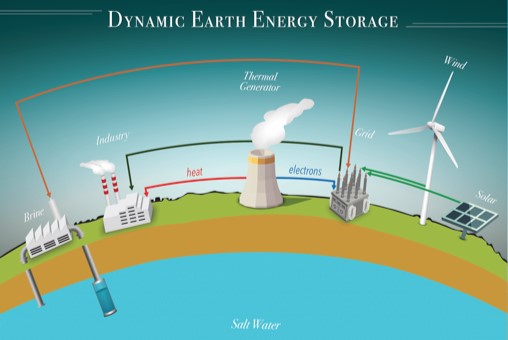This INL-CAES geothermal energy storage project is expected to determine whether reservoirs deep within the earth could be used to store energy, enabling the innovation, research, and education pillars at CAES in the energy-water nexus focus area. The project, which received funding through DOE's Geothermal Technologies Office, addresses the science, engineering, and technical issues associated with large-scale day to seasonal storage and recovery of excess energy using deep geologic formations so that stored thermal energy can be withdrawn and used directly as geothermal heat or applied to power generation. Because suitable geologic formations are located throughout the United States, large-scale geologic thermal energy storage could allow for adoption of geothermal energy nationwide, primarily through capture and direct use of low-grade heat. Given the size, extent, and distribution of deep saline aquifers, the amount of energy that can be stored is immense. This project calls for several components, including the evaluation of the potential capacity, preliminary modeling work to assess the efficiency of thermal energy storage and retrieval, characterization of the potential impact on grid-wide rotor stability, and collaboration with industrial partners including PacifiCorp, Lawrence Berkeley National Laboratory, and Palo Verde Nuclear Generating Station to evaluate the economic viability of thermal energy storage.
Dynamic Earth Energy Storage: Terawatt-Year, Grid-Scale Energy Storage using Planet Earth as a Thermal Battery (GeoTES)

CAES Impacts
Expand clean resilient energy options, Industry uptake of new technology

